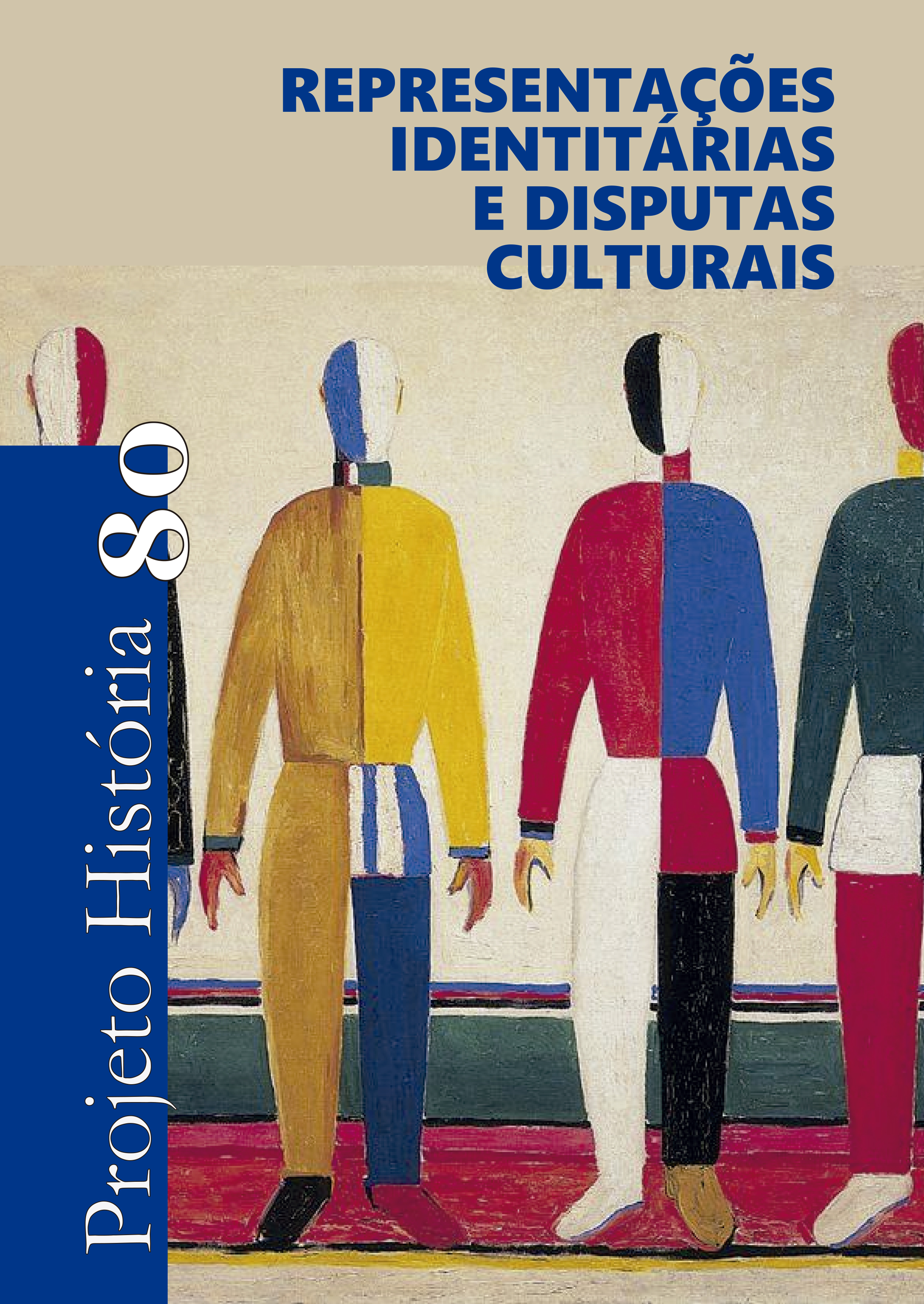Fenícios no Egeu
DOI:
https://doi.org/10.23925/2176-2767.2024v80p219-244Palavras-chave:
Fenícia, Expansão, EgeuResumo
Muito já foi pesquisado e escrito acerca da expansão fenícia para o Mediterrâneo Central e Ocidental, mas os primeiros passos e momentos deste importante processo que levou a importantes interações culturais na história dos povos de toda a região mediterrânica, e teve como consequência, na longa duração, produtos seminais - para citarmos apenas dois, o desenvolvimento da escrita a partir da sistematização do alfabeto fenício, e a organização socioespacial das cidades -, é ainda pouco explorado. Neste artigo, abordamos as pesquisas mais recentes acerca da presença fenícia em terras ‘gregas’, na região do Egeu, onde, em paralelo à ilha de Chipre, os fenícios deram seus primeiros passos fora de sua terra natal.
Referências
Fontes textuais
Heródoto. História. Trad. Brito Broca. Rio de Janeiro: Nova Fronteira, 2019.
Homero. Odisseia. Trad. Jaime Bruna. São Paulo: Cultrix, 1976.
Obras
ACQUARO, E. Cartagine: un impero sul Mediterraneo. Roma: Club del Libro Fratelli Melita, 1987 [2ª Ed.].
ANTONIADIS, V. Early Iron Age Cemeteries at Knossos: The Appreciation of Oriental Imports and their Imitations by Knossian Society. Tese de doutorado. Departament d’Humanitats, Institut Universitari d’Historia Jaume Vicens i Vives, Universitat Pompeu Fabra, Madrid, 2012.
AUBET, M. E. The Phoenicians and the West. Politics, Colonies and Trade. Cambridge: Cambridge University Press, 1997 (1ª Ed. 1987).
BONDÌ, S. F. Le commerce, les échanges, l’économie. In: KRINGS, V. (Ed.). La civilisation phénicienne et punique. Manuel de recherche. Handbook of Oriental Studies, Zwanzigster Band. Köln: E. J. Brill, 1995. pp. 268-281.
BUNNENS, G. L'expansion phenicienne en Mediterranee. Essai 'interpretation fondée sur une analyse des traditions litteraires'. Roma / Bruxelas: Institut Historique Belge de Rome, Études de Philologie, D 'Archéologie et d'Histoire Anciennes, v. 17, 1979.
BOTTO, M.; OGGIANO, I. L’Artigiano. In: ZÁMORA, J. (Ed.). El hombre fenicio: estudios y materiales. Consejo Superior de Investigaciones Cientificas, 2003, pp.1-19.
CELESTINO, S.; RAFEL, N.; ARMADA, X.-L. Contacto cultural entre el Mediterraneo y el Atlantico (siglos XII-VIII ane) - la precolonización a debate. Escuela Española de Historia y Arqueología en Roma, Serie Arqueológica 11. Madrid: Consejo Superior de Investigaciones Científicas, 2008.
CRAWLEY QUINN, J. In Search of the Phoenicians. Princeton: Princeton University Press, 2018.
GRAS, M; ROUILLARD, P.; TEIXIDOR, J. L’univers phénicien. Paris: Artaud, 1988.
HALL, J. Ethnic Identity in Greek Antiquity. Cambridge: Cambridge University Press, 1997.
HALL, J. Hellenicity, between Ethnicity and Culture. Chicago: University of Chicago Press, 2002.
HODOS, T. The Archaeology of the Mediterranean Iron Age. A Globalising World c. 1100-600 BCE. Cambridge: Cambridge University Press, 2020.
KORMIKIARI, M. C. N. Expansão marítima e influência cultural fenícia no Mediterrâneo centro ocidental. Clássica, Anais da VII Reunião Anual da SBEC, 1993, pp. 261-267.
KORMIKIARI, M. C. N. O comércio, as trocas e o sistema do dom entre os fenícios. In: Alexandre Galvão Carvalho. (Org.). Interação social, reciprocidade e profetismo no Mundo Antigo. Vitória da Conquista: Edições UESB, 2004, pp. 127-154.
KORMIKIARI, M. C. N. Quem eram os fenícios? Ou da crise identitária na Academia do século XXI. Hélade, vol. 5, n.2, 2019, pp. 13-34.
KILLEBREW, A. E. Canaanite roots, proto-Phoenicia, and the early Phoenician Period. Ca. 1300-1000 BCE. In: LÓPEZ-RUIZ, C. et al. (Eds.). The Oxford Handbook of the Phoenician and Punic Mediterranean. Oxford: Oxford University Press, 2019, pp. 39-55.
KOUROU, N. Phoenician Presence in Early Iron Age Crete Reconsidered. Actas del IV Congreso International de Estudios Fenicios y Púnicos. Cádiz, 2 a 6 de outubro, 1995. Cádiz: Servicios de Publicaciones Universidad de Cádiz, 2000, pp. 1067-1081.
KOUROU, N. The evidence from the Aegean. In: Sagona, C. (Ed.). Beyond the Homeland: Markers in Phoenician Chronology. Leuven, Paris, Dudley, MA: Peeters, 2008, pp. 305-364.
KRINGS, V. (Ed.). La civilisation phénicienne et punique: manuel de recherche. Handbook of Oriental Studies. Section 1 The Near and Middle East, Vol. 20. Brill Academic Publishers, 1994.
LÓPEZ-RUIZ, C. e DOAK, B. R. (Eds.) The Oxford Handbook of the Phoenician and Punic Mediterranean. Oxford University Press, 2019.
MATTINGLY, D. J. e HITCHNER, B. Roman Africa: an Archaeological Review. The Journal of Roman Studies, n. 85, 1995, pp. 165-213.
MAUSS, M. Sociologia e Antropologia. São Paulo: E.P.U.; Edusp, 2 vols., 1974 (1ª Ed. 1925).
MAZZA, F. La 'precolonizzazione' fenicia: problemi storici e questioni metodologiche. In: ACQUARO E. et al. (Orgs.). Momenti precoloniale nel Mediterraneo Antico. Atti del Convegno Internazionale, Roma, 1985. Roma: Consiglio Nazionale delle Ricerche, 1988, pp.191-203.
MOSCATI, S. Problematica della Civiltà Fenicia. Studi Semitici, vol. 46. Roma, 1974.
NIGRO, L. The temple of Astarte ‘Aglaia' at Motya and its Cultural Significance in the Mediterranean Realm. In: BLAKELY, S. et al. (Orgs.). Religious Convergence in the Ancient Mediterranean. Studies in Ancient Mediterranean Religions. Lockwood Press, 2019, pp.101-125.
POPHAM, M. An engraved Near Eastern Bronze bowl from Lefkandi. Oxford Journal of Archaeology, vol. 14, n. 1, 1995, pp. 103-107.
SHARON, I. et al. An Archaeological Contribution to the Early Iron Age Chronological Debate: Alternative Chronologies for Phoenicia and Their Effects on the Levant, Cyprus and Greece. Bulletin of the American Schools of Oriental Research, n. 332, 2003, pp. 7-80.
SLIM, H.; MAHJOUBI, A.; BELKHOJA, K.; ENNABLI, A. L’Antiquité. Histoire Général de la Tunisie. Túnis: Sud Éditions, 2010.
STAMPOLIDIS, N. The Aegean. In: LÓPEZ-RUIZ, C. et al. (Orgs.). The Oxford Handbook of the Phoenician and Punic Mediterranean. Oxford: Oxford University Press, 2019, pp.493-503.
Downloads
Publicado
Como Citar
Edição
Seção
Licença
Copyright (c) 2024 Projeto História : Revista do Programa de Estudos Pós-Graduados de História

Este trabalho está licenciado sob uma licença Creative Commons Attribution 4.0 International License.

Este obra está licenciado com uma Licença Creative Commons Atribuição 4.0 Internacional.




